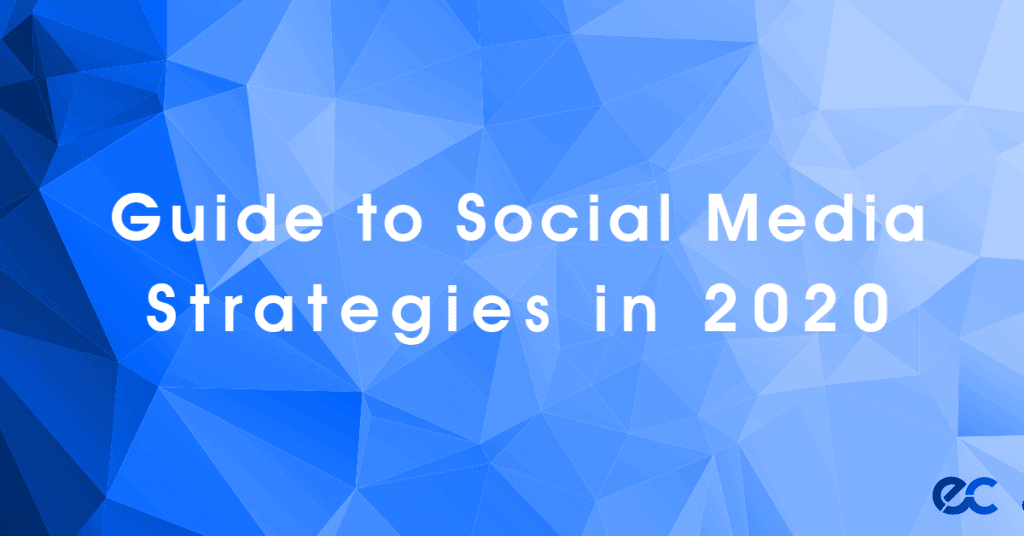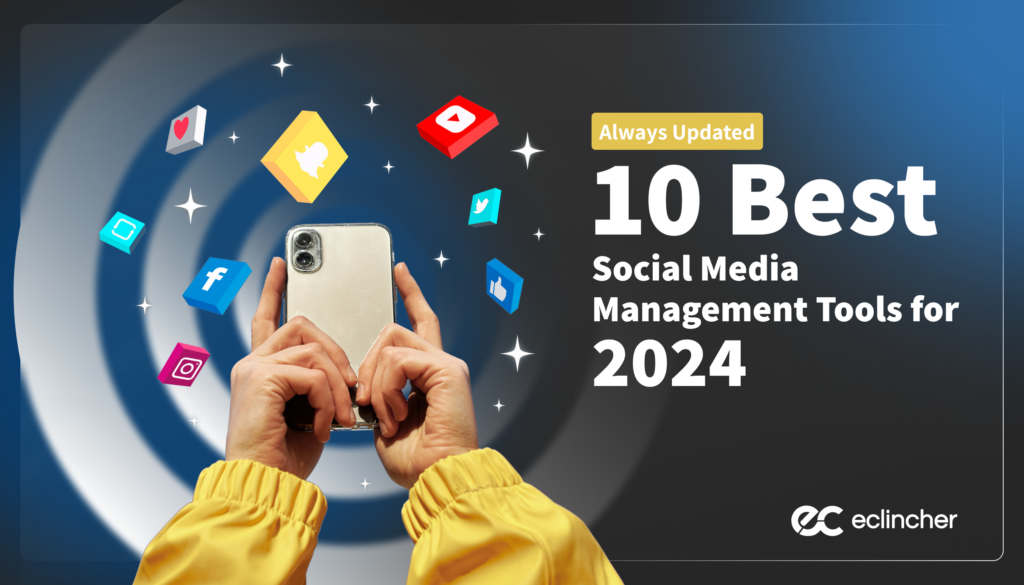Table of Contents
- Have a (Digital) Marketing Strategy
- Consistently Track and Adapt
- Analytics and Insights – Keys to Success
- Focus on the Right Platforms for Your Business
- Add Automation
- Avoid “Black Hat” Techniques for Growing Your Pages
- Using Social Media Appropriately
- Auto-Posting Across Platforms
- Respond to Comments and Shares
- Leverage User-Generated Content
- Brand fatigue (AKA “Content is King”)
- “Selling” it Right
- Ask for Online Reviews
- Prioritizing the Quality of Your Followers
- Conclusion
Introduction
Social media marketing budgets are on the rise. According to Top 10 Digital Agencies, social media advertising costs a minimum of $48,000 a year. Businesses are dropping serious funds on digital marketing and advertising, and yet in many cases, they lack the know-how and expertise to properly leverage social media to augment their marketing efforts.
What results is the belief that “social media for businesses isn’t working,” and nothing could be further from the truth. There are indeed brands seeing a massive return on their social media spending, which is why they’ll happily pour four, five, and six figures into it each and every month.
How can you start to see promising results for your social media marketing campaigns?
Brands commonly make many of the same mistakes, which stop them from seeing the kind of success they could on social media. In this blog, we will be going over some of these common misconceptions and mistakes and focus on what you should be doing instead.
Rewind to 2005. Social media wasn’t quite yet a “thing.” According to the Pew Research Center, just 5% of American adults used at least one platform.
It spread like wildfire, though. By 2011, half of all Americans were on social media; and today, that number is up to 72% of all Americans. This might be a modest estimate. Statista puts that number at closer to 79%.
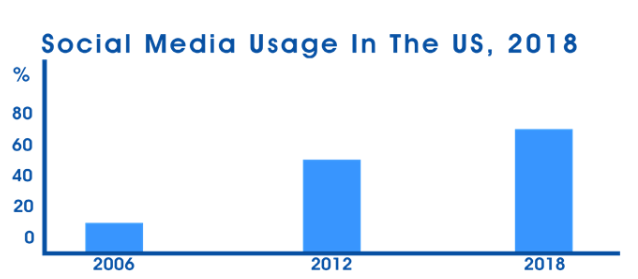
There are no signs of this trend slowing down, either. Statista estimates that as of 2019, there are 2.77 billion social media users worldwide. They estimate that number will go up to 2.9 billion and 3.02 billion in 2020 and 2021 respectively.
Thankfully, most businesses understand that if you want a chance at survival — let alone success — you have to have a “social presence,” which is becoming a large portion of overall “online presence.”
Simply being present won’t cut it, though. A precise and thoughtful strategy is necessary to move the needle, especially considering the various social media platforms aren’t necessarily making it easy for businesses to do well online.
Take, for instance, the substantial decline in organic reach most of us have experienced on Facebook over the last several years. While the numbers vary based on the source, research shows that as of February of 2012, organic reach hovered around 16%. By March of 2014, that number had gone down to just 6.51%.
Ironically, the situation might be even worse for pages that have 200,000 likes or more. Their organic reach might be as low as a measly 2%.
In other words, while social media marketing campaigns provide valuable returns, if you don’t play your cards right and properly leverage social platforms as part of your marketing channel, you will not enjoy the viral and vital pulse these networks provide, or even worse, be penalized with a negative image.
Before we get started, we want to leave you with one take away: Digital marketing shouldn’t be an afterthought. It shouldn’t be something you get to only once you have the spare time. Nor is it something you should have just for the sake of having. Social media is a tool you can use to grow your business online, drive real revenue, and gain massive returns over time.
1. Have a (Digital) Marketing Strategy
According to a report by Smart Insights, nearly half of businesses are engaging in social media but with no strategy. When it comes to your digital content marketing strategy, don’t just wing it. You won’t get the results that you want.
There are far too many moving parts to fly by the seat of your pants. Even just one single platform is made of too many intricate details not to have a strategy. Now, combine that with any other platforms you’re using, and you’re bound to encounter a serious mess.
A strategy will help you stay focused. So, how can you start to develop one? You should very clearly be able to answer this question: What is your marketing objective with your social media planning?
This is where your strategy starts. Do you want to:
- Figure out your target segments/customers?
- Sell products for your eCommerce brand?
- Grow your email list?
- Boost traffic to your website?
- Boost audience engagement?
- Improve brand awareness?
- Generate leads or sales?
- Manage customer relationships and customer experience?
- Manage public relations?
What’s your goal? Find your goal(s), and you’ll start to gain a better understanding of what you need to be doing to get there. Look at where you are now and where you want to be, and then start mapping out the steps to get there.
Make Your Goal Measurable
If your goal is to grow your email list, you have to include the numbers you’re aiming for. Do you want to grow it to 1,000? 10,000? When do you want that accomplished? Within six months? Within a year? Keeping a measurable goal allows you to stay on track and monitor your progress.
Know Who Your Audience Is
Knowing who your audience is and understanding what they want to see on social media can help you formulate the type of content to create. Do market research: Study them. See what types of posts they like and comment on, and what type of content captures their attention.
Know Who Your Competition Is
Study your competitors and their strategy – see what they’re doing effectively and if they have social media marketing strategies you can borrow but improve on.
Examine Your Current Social Media Efforts
How are your current social media marketing strategies faring so far? Run multivariate testing and see which social media marketing campaigns are working, which aren’t, and the points that you can improve.
Keep a Social Media Calendar
What should you be doing to reach your goals and objectives? Plan that out on your social media calendar. Include the types of content you’ll be releasing and when you’ll be uploading them, AKA a “content calendar.”
Track Your Metrics
Monitor the implementation of your strategy and see if it’s getting you on the right track. If you find that a few of your efforts aren’t yielding the results you want after a reasonable amount of time, then you’ll have to evaluate and respond accordingly.
Keep in mind, too, that your marketing plan, goals, and objectives will change over time depending on how your business evolves and what your analytics tell you — and this brings us to our next point.
2. Consistently Track and Adapt
Write this down: Nothing works forever. That is especially the case when it comes to your social media strategy.
Social media is entirely too dynamic and changes constantly, sometimes even daily. Some are big algorithm changes that the platforms themselves will confirm. However, smaller changes are made rather frequently without our knowledge. We don’t really think about it until we notice that something with our digital marketing performance is a little off.
Brands must be willing to adapt to these changes, or they will drown.
Aside from changes within the platforms that you’ll need to evolve along with, one must also take into consideration the fact that even the most flawless content strategy will stop working eventually, regardless of what the platforms’ algorithms do.
Furthermore, in general, successful social media management takes constant nurturing. You’re trying to engage and build relationships with living, breathing people. This means you need to be present. Social Media Examiner’s 2016 Social Media Marketing Industry Report says that every week, 63% of marketers use social media for six hours and up. 39% use it for 11 hours and up. 19% use it for more than 20 hours every week.
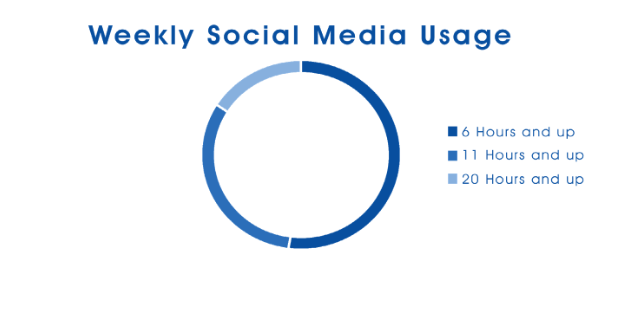
So, first, make sure you consistently check your strategy and the social media landscape. Mainly, keep track of:
- Your audience and how their buying behaviors change.
- On which platforms your audience is present.
- Your desktop vs mobile reach and experience.
- Paid vs organic results.
- Brand mentions and the sentiment around it.
- The popularity of social and marketing platforms.
- The latest privacy and data regulations.
And second, as you work to adapt and adjust, remember to always be present. How often do you post on your social media accounts? Once a week? Twice a month? A few times a year? If you’re not posting enough, then you can’t expect people to continue to follow you.
Remember that social channels differ, Facebook marketing is different from Twitter marketing, or any other internet marketing at that. The recommended number of posts a day for Instagram and Facebook is two to three, and about three to 15 posts on Twitter, since tweets have a short shelflife. Schedule your posts ahead of time and remember to post relevant content consistently.
3. Analytics and Insights – Keys to Success
Plain and simple, if you’re not tracking and measuring your social media and marketing efforts, you can’t know if they’re working. This is how you measure your progress and success — and your setbacks.
For many brands, analytics is definitely not the fun part of social media. It’s fun to be creative and post things and see your social media content get a reaction out of people. Analytics, though? Boring.
In reality, once you get a taste of really delving into your data and analyzing it to improve your strategy, you might very well find yourself hooked and geeking out on it daily.
Data is where it’s at.
What should you be looking at, specifically? The answer depends on what your social media goals and objectives are.
For instance, if your goal is to improve brand awareness, you’ll have to check the attention that people are giving your content. This means keeping track of:
- Mentions
- Shares
- Links
- Issue an online survey
Or, if you’re aiming to engage with potential customers or generate leads, then you might want to track your conversion rate or the number of people successfully taking action after seeing your post:
- Subscribing
- Downloading a free ebook
- Buying your products directly
You can’t know if what you’re doing is working if you don’t measure it. Thus, as an example, if you’re using social media to grow your email list and enhance your email marketing efforts, then you need to track how many subscribers you’re getting from your various platforms.
Of course, it’s still important to check almost all of your social media account metrics, but focusing on the metrics that are directly related to your goals is a good start.
Let’s address another huge misconception in social media: Your number of likes and followers reigns supreme. False!
While you should ideally see your likes and followers increasing over time, they’re a fairly superficial metric to measure. You certainly shouldn’t rely on these numbers exclusively to determine your strategy and whether or not it’s working.
What you really need to focus on and look at is engagement – comments, shares, conversions, and sales.
- Take Facebook, for instance. At present, comments are the most powerful engagement you can receive. This should be one goal of your social media strategy.
- Conversions are king. Again, your social media is a tool. It should be accomplishing something specific. If it isn’t, then it isn’t doing its job.
- There are a few ways to approach sales. For instance, because you can sell products directly on some of the platforms, you can look at those numbers. Additionally, you can look at sales on your website that are ultimately a result of your social media efforts. Either way, your social media can indeed have a monetary return.
How can you measure your analytics?
The platforms have their own native analytics, which is a great place to start. However, they tend to be either too basic or overly complicated. A social media management tool like eclincher may be the right solution. First, Google Analytics integrates right into it, so you can track your website and search engine optimization (SEO).
But eclincher goes beyond, and like any dedicated analytics tool, it will also cover multiple platforms, like Facebook, Instagram, LinkedIn, YouTube, and Twitter analytics. With marketers in mind, such platforms have finetuned and condensed some of the more important data to offer you a simplified dashboard that makes the information easy to understand.
The point is to have an additional tool that gives you the insights you need in a way that you can reasonably digest them and act upon them.
4. Focus on the Right Platforms for Your Business
It stands to reason that if you’re gaining traction on one platform, you can take over the world with 10 platforms, right?
Well, maybe not.
More isn’t always better, and such is typically the case when we’re talking about how many social media platforms you have. Not only do you not need a profile on every platform, but trying to manage so many could totally backfire.
As an example, some brands find success in selling their product using Tumblr. So, you attempt the same for your own eCommerce company. You invest five hours a week on it, to generate one sale.
Meanwhile, you invest five hours a week on Facebook to get an average of 20 sales.
Understandably, business owners don’t want to walk from money, period. This is how they justify putting any time and resources into Tumblr. That’s a sale they wouldn’t have made otherwise!
But imagine how much more money you’d make taking those five hours away from Tumblr and instead investing them on Facebook. This is a far more efficient, productive, and profitable use of your time, money, and resources.
Focus on where you get the best ROI. Shelve everything else, at least for now.
What will this mean for your brand? Where should you focus your attention? There’s no one-size-fits-all approach, but 2016 data from Pew found that YouTube and Facebook dominate, with 73% and 68% of adults saying they use the platforms, respectively. Instagram came next, at 35%.
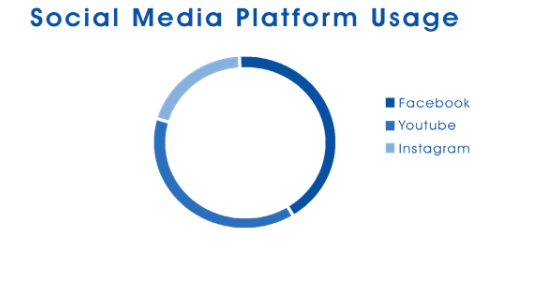
Take into account your target audience and which social media platforms they’re spending most of their time on. This can help you identify the platforms where you should focus most of your attention and effort.
5. Add Automation
Marketing automation that may use artificial intelligence and machine-learned patterns can help you manage various marketing processes across multiple channels, automatically, with the goals of increasing revenue and maximizing efficiency.
Marketing automation allows you to target and engage with leads and customers (email, web, social, and text) as well as better analyze and respond quickly to perfect your marketing strategy.
Business use marketing automation to automate online marketing efforts such as:
- Lead generation, nurturing, and qualification.
- Online campaigns (email, social, ads, etc.).
- Helping with various sales activities (build a pipeline, follow up, promote, etc.).
Good automation tools will effectively help you handle repetitive tasks, reduce human errors, and free your time to focus on higher-order challenges.
More often than not, marketing automation implementations will fail if you haven’t properly set your marketing strategy first, have your segmentation and value proposition ready, and know your target audiences, where they reside, and how you want to engage with them. Once all this is set, it’s time to figure out which tools are right for you:
- What parts of your operation do you really need to automate (pain)?
- Integration with other systems you have
- Pricing
For example, looking at social media and online presence, you don’t need us to tell you that maintaining (not to mention growing) your social media profiles is a real-time drain. A lot of grunt work is involved.
Thankfully, gone are the days when you needed to sign in to each platform, one at a time, and post fresh content each day. The process has been streamlined and automated to shave hours off of the work you do every week.
Imagine everything else you can do with that extra time.
Using a social media management tool like eclincher, you can schedule posts ahead of time and even recycle evergreen content using the schedule queue. “Batching” your work can be a serious time-saver. At the end of each week, schedule all of the following week’s posts out. This can easily be done in minutes.
Plus, the platform makes it easy to resize photos for every platform (a must!) with its Canva integration. eclincher will even save your important hashtags so that you can easily and instantly add them to your Instagram post.
6. Avoid “Black Hat” Techniques for Growing Your Pages
Are you purchasing page followers or post likes? Stop immediately.
The platforms see this, and they will penalize you for it. Once that happens, it’s difficult, and sometimes impossible, to undo the damage.
Plus, when you have a large number of followers, but you don’t have the engagement to match, Facebook and other major social platforms notice. They look at your page and go, “Wait a second. This brand has 400,000 page likes but an average of two likes per post. Something isn’t right.”
Any means of acquiring followers and likes that aren’t either organic or done through paid ads are risky.
This goes for the endlessly annoying follow/unfollow method. Users will follow a large number of people, some of whom will follow them back. Then, they unfollow them. Their follower count grows while their following count stays the same or even goes down. This makes them look more “popular” and desirable on social media.
Black hat techniques will get you in trouble.
Something else you need to know? Stay away from any third-party apps that help you gain followers. Sometimes, they ask you to pay a small amount of money in exchange for followers. Other apps work by having you complete tasks — like watching ads online — in exchange for tokens or points that you can redeem for followers.
Social media platforms have made clear, in no uncertain terms, that they do not allow the use of these apps. If you choose to utilize them anyway, you’ll land in hot water.
While we’re on the topic of shady practices, avoid spamming your own posts with excessive hashtags. Not only does it look bad to your followers, but once again, it can raise a red flag to the platform. Also, it doesn’t really work.
Other types of spam (that also don’t work) include copying and pasting the same comment across multiple posts and pages or getting people to do the same to your own page.
Social media platforms are only becoming more savvy, and they’re catching on to all of these little “tricks.” As Instagram expert Alex Tooby once explained, because of Instagram’s algorithm changes over the last few years, some accounts have seen a decrease in engagement of up to 50%.
You’re not going to trick the algorithm.
Your social media content needs to be genuine, honest, and real. If it isn’t, you’re going to be dinged for it. This could mean that your page is suppressed so that fewer people see it. Or it could mean that your page is shut down entirely. Is it worth the risk?
Bear in mind that the number of people following you and how many likes your posts get are relatively meaningless. Social media is a tool! You can have all the likes in the world, but if your channel isn’t doing something to help grow your brand — like sell a product or grow your email list — then it isn’t working.
Don’t obsess over these numbers. If you want to obsess over something, make it conversions. Study what gets your audience interested, see what types of content brings potential customers and make them click that share button, and know what kind of posts they usually comment on.
Understanding who your audience is and what they like to see on social media can help you increase engagement and then eventually, conversion.
Moreover, you’ll have to stay active. Social media is about networking. Connect with your audience and respond to their comments. If you want them to engage with you, then you’ll have to engage with them too. So, don’t just wait for people to click like. Explore other related accounts’ content, leave a comment on their posts, and try to engage with their followers. This way, you’ll be able to expose your brand to more people, possibly gain more interested followers for your brand, and improve your conversion.
7. Using Social Media Appropriately
Much of this ties into the previous point, but it’s so important — and unfortunately, so common — that it’s worth highlighting further.
Being popular on social media, in and of itself, gets you nowhere. Having a large number of followers gets you nowhere. Therefore, your goal shouldn’t be to get more followers.
Why? Simple. It’s because what matters most is what you do with the followers you have. So, ask yourself this question:
What am I doing with my followers?
You should treat your followers like potential customers or leads, and leads need to be nurtured. What are you doing to nurture your relationships with your leads? Are you collecting their email addresses and putting them in automations that consistently deliver to them high-quality, high-value content?
Do you make a point of engaging with them on social media? Are they leaving comments, sending you messages, or otherwise engaging in return with you? Post likes, similar to follower count, don’t mean a whole lot all on their own.
What you should be aiming for are conversions. Conversions are where it’s at. These are what pay the bills. A conversion means that someone took action of some sort — whether it was signing up for your email list, buying a product, or enrolling in a membership. Here are some tips that might help you improve conversions.
Keep it Simple
When you write captions for your marketing content, it’s always good to keep it simple. If you have something to say, then express it as clearly and as concisely as possible. This way, it’s easier for your audience to understand.
Add an Effective Call-to-Action (CTA)
After your audience reads the content, what should they do next? Direct them to the next step in the process by adding an effective CTA — like Shop Now or Click Here to Download.
Boost Top-Performing Content
If you’re on Facebook and running campaigns, one of the best ways to ensure that you get seen is by boosting your posts. However, this can get expensive if not managed well. The solution: Identify your top-performing content and boost that.
Keep Your Branding Consistent
The colors, images, and the voice that you use for your brand should be consistent all throughout. This way, it’ll be a lot easier to identify you. It will also give your brand personality that people will be able to identify with.
Review Your Landing Pages
Your landing page is where conversion actually happens. The decision to subscribe, download, or click happens here. So, make sure that your landing page looks trustworthy, review your grammar and spelling, and emphasize the things that they’ll be getting once they agree to click on your button.
Your social media channels are a tool to augment your marketing channels and grow your business. Ask yourself how your social media is helping you. If you can’t come up with a solid answer, it’s time to go back to the drawing board.
Test, Evaluate, and Revise
Finding the best recipe for conversion varies. You will have to experiment with various mixes to find the most suitable one for your brand. Remember to test the strategy, evaluate the results, and revise if need be.
Don’t let your social media become about vanity. Vanity means nothing for your revenue. The bottom line is this: If you have a large following but these people aren’t actually doing anything to help your business grow, it’s worthless.

Your social media channels are a tool to augment your marketing channels and grow your business. Ask yourself how your social media is helping you. If you can’t come up with a solid answer, it’s time to go back to the drawing board.
8. Auto-Posting Across Platforms
You can easily shave time off of your social media duties by scheduling the exact same post across all of your platforms, right? Yes, but it isn’t highly recommended.
This practice is common with many social media management tools, but you should steer clear. The reason is that what works on Facebook won’t work on Instagram, Twitter, and so on. For instance, hashtags hurt Facebook engagement but help on Instagram and Twitter.
Sometimes, longer posts can be beneficial on Instagram and Facebook. Twitter, on the other hand, offers much less space to get chatty.
And let’s talk about visual content. The ideal dimensions for photos vary from platform to platform. Instagram marketing works best with a perfect square. Facebook and Twitter are another story. And Pinterest? That platform is marching to the beat of a different drum and is a great place for posting tall images.

Customers don’t like connecting with faceless, corporate brands that simply dominate the narrative. They want a dialogue. They want to speak and feel like they are being heard. Very importantly, they need a brand that responds to their needs and desires directly. With a social inbox, none of your conversations will get unnoticed or lost and lowers the risk of leaving your customers unattended. By engaging in conversation, you show you connect to your buyers. You listen, understand, and care about them on a human level.
We know it can feel tedious to spend time responding to every single comment, but you should anyway.
9. Respond to Comments and Shares
Comments are immensely powerful, in particular, Facebook and Instagram. Take notice when you receive them. If you really want to get bonus points with the platforms, you should be responding to everyone.
Even if the comment doesn’t say anything of substance, take a few seconds to like it and respond — if for no other reason than to simply thank them for commenting.
Yes, this even goes for negative comments. Before you ignore or hide these comments, wait. You can use them as an opportunity to learn what you might be able to improve with your product or service.
Negative comments are also an opportunity to show your followers how friendly and professional you are. Aim to help disgruntled customers or other nay-sayers — not ignore them. You might just convert them into loyal followers.
10. Leverage User Generated Content
User-generated content (UGC) is gold! But first, what is it?
Let’s say a customer posts a photo on Instagram wearing yoga pants you sell. They give your brand a shout-out and maybe even tag you. That’s UGC.
UGC is essentially free advertising. It’s a testimonial/review from a satisfied customer that you didn’t even have to ask for. It doesn’t get much better than this. User-generated content resonates with potential customers because it’s authentic and doesn’t come across as promotional content. Rather, UGC reflects the true customer experiences of other people who actually used your product or service and were happy with it.
Another great value of UGC is that it turns one-time, passive consumers, to engaged brand ambassadors! Depending on how the content is utilized and promoted, this active involvement can produce significant ROI for your business.
What do you do with this content?
- Create communities: Smartly use UGC to create viral communities that discuss and talk about your brand, product, or service.
- Get involved: Start with likes and comments. Take it one step further, though, and share it on your own channels (with permission from the original poster, of course).
- Be appreciative: Give them a shout-out in return, thank them for supporting your brand, and show potential customers how happy people are with your products or services.
What are some common types of UGC?
- Visual experiences are top
- Photos
- Videos
- Blog posts
Follow up and repeat! continue to cultivate and nurture relationships with those brand ambassadors. Build a reliable and stable group of happy customers and fans who actively and passionately “market” your products or services – and remember – those are the real “reviews” consumers follow and consider the most.
11. Brand Fatigue (“Content is King”)
If you’ve noticed a sudden decline in audience engagement, a large number of followers leaving you, and your metrics exhibiting an all-time low amidst your consistent posting, then you might want to pause for a bit and examine the situation. You could be causing brand fatigue that you have to resolve ASAP.
Brand fatigue is a marketing phenomenon that all businesses want to avoid. It’s when your followers are so fed up with seeing your branded content that they ignore your posts, block your account from their feed, or unfollow you completely.
While being consistent with your content and scheduling your posts regularly and often can be a factor in improving audience engagement, if not managed properly, it can be counterproductive.
Read this: People get tired of seeing the same thing from you again and again and again.
For instance, 84% of Millennials, one of today’s biggest consumer groups, dislike traditional advertising. If you want people to notice your brand, then you have to be always thinking of new and innovative ways to keep them interested. It’s not easy, but it’s essential in order to survive and stand out, especially in today’s competitive social media scene.
Brand fatigue can happen if you’re not careful about the content that you produce. Here are some things you have to keep in mind.
You can’t only post about your own brand all the time.
Yes, you’re on social media to promote your brand to the platforms’ large audiences, but there are plenty of ways to do this without boring your audience to the point of pushing them to click that unfollow button.
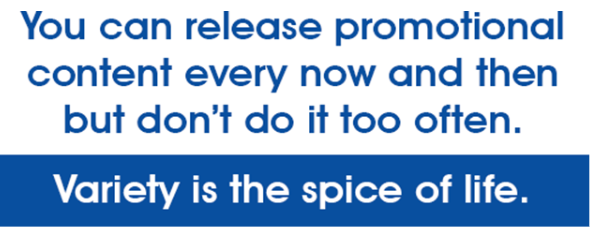
Your content requires creativity, so be open to new ideas and try out new things. There is no such thing as a strategy that works well forever in social media. People get tired of the repetition. They want to see interesting stuff. They like checking out things that provide more value to their lives. And often, it means you have to take some time off from talking about your brand.
Here are some recommendations:
- You can release promotional content every now and then, but don’t do it too often. Variety is the spice of life.
- You could post about the latest news about your industry or create tutorial videos to teach people how to use your product or how to apply the product in their daily life. Another good idea is to post trivia and helpful information related to your product.
- You could run contests that encourage engagement either in the form of tagging other people in your content, creating user-generated content about your brand, or answering questions — things that entice people to participate.
There are many types of content you can create to keep people interested. Check your competitors and see what they’re doing, read new articles about the latest trends, and keep on exploring new things. There’s no fixed format when it comes to posting content on social media, and that’s what makes it fun.
Just remember that whenever you decide to create content, try to put yourself in your audience’s shoes and ask yourself this: Would this content make me stop scrolling and check it out?
Assessing it personally, with your audience in mind, will help you generate content that people will actually engage with.
It’s important to share posts from other brands and pages from other websites.
Aside from posting content that you create for your brand, it’s also good to share other brands’ content. Brands that are related to your company are a good start (obviously, focus on brands that are valued and that would complement and augment your brand and business). For instance, if you’re a brand that sells clothes, you could share fashion tips from another brand that sells shoes (and credit them by tagging that account on your caption).
Curating content doesn’t just help improve your workload. It can also help you in other ways.
First, by promoting other people’s content, you’re not just showcasing their content to your audience. You’re also opening more opportunities to expose your content to that brand’s very own audience.
Second, it creates a connection between your brand and the brand where the post you shared belongs to. This could inspire future collaborations or other joint projects.
And third, in the same way, that you’re promoting them, they could also take measures to promote your content to their followers.
Social media is networking. It’s not solely about you. Start expanding your network and find ways to connect with other people. Engage with your audience as well as other industry leaders, influencers, and other brands that are related to yours.
Find things that offer value to your followers.
Here’s the thing. A lot of people ignore things that don’t add value to them. Before you post something on social, ask yourself this question: What’s in it for your audience? Knowing this could help you create better, more relevant content that your audience will engage with more.
If you want to improve your social media engagement, then you have to make sure that you show your followers quality content that is interesting and adds value to their lives. Otherwise, your audience might just decide to ignore it.
Studying your metrics can help a lot with this. According to entrepreneur and social media guru Neil Patel, five of the most important metrics you should be measuring are volume, reach, engagement, influence, and share of voice. See which content receives the best results and adjust your strategy based on it. You might have to do trial and error until you find the right formula, and that’s okay.
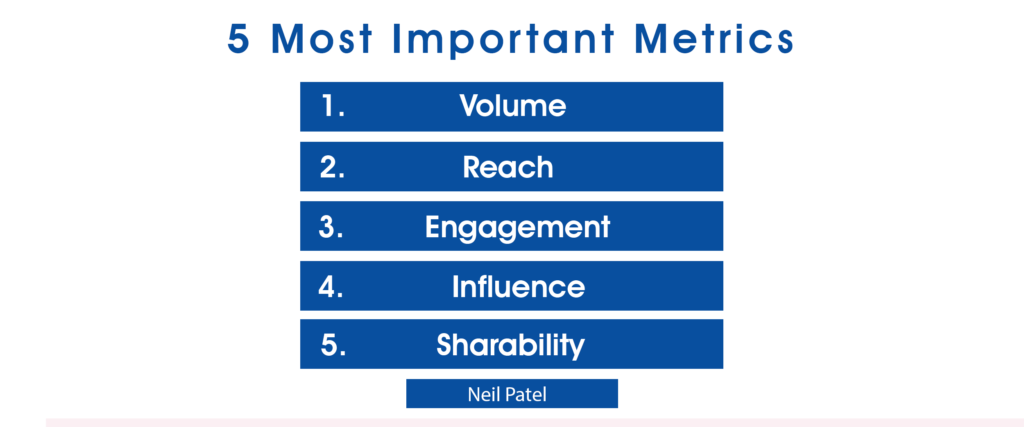
Remember to keep learning. What might work today might not generate the same results next week, so continue to explore. Facebook used to perform well with hashtags, but their changes in algorithm don’t recommend using them now.
Instagram used to show all the new posts from the accounts that you follow. Now, they’re prioritizing showing content that those accounts you often engage with the upload.
Algorithms and rules change, so you should keep yourself updated and adapt accordingly.
12. “Selling” it Right
Hard selling might have worked a long time ago, when the internet wasn’t as popular and people had no other way to get information than through magazine or newspaper write-ups, television ads, radio ads, and salespeople, but it isn’t that effective of a strategy today.
Consumers nowadays are smarter, and they have more means to do their research. Therefore, aggressively pushing them to buy from you might affect your business strategy negatively. This doesn’t mean that hard selling doesn’t work anymore. It’s just that more and more, people are put off by the aggressiveness that hard selling is most known for, and this is especially true when it comes to social media.
Here’s the hard truth. While businesses use social media primarily to promote their business online, your customers use it mostly to socialize. For instance, they use it to find out what their friends and family members are up to, they use it to update other people about their life, they check it to see what’s trending in the news, and they scroll through their feed to be entertained and informed.
They’re on social media to be connected to people, and if you’re constantly flooding their feeds with your hard-sell marketing content, they might get annoyed and click that unfollow button.
People don’t like being blatantly sold to. Do you like to see tons of ads every day? Most people don’t. A lot of social media users don’t like it if they get bombarded with posts telling them to buy this thing now, or informing them that a brand’s products are almost sold out so they have to get it today.
It doesn’t matter how beautifully made your image is. If it’s repetitive and if they find no value in it for them, they’ll ignore it no matter how much pressure you put on them. One study showed that only a small percentage of people 15 years and older like seeing company ads and offers through social media. 77% of them prefer to receive them through email. This means that if you want to send out traditional promotional materials, sending them out through newsletters – and not through social media – might be the best way to do it.

Your posts should answer this question: What do they get out of this?
Buyers don’t care too much about the intricateness of your product’s specifications, or how amazingly sturdy the materials you used are. What they care about the most is how your product can help them. How it can make their life better. If you want to convince anyone to purchase your product, you have to let them know what’s in it for them.
Explain benefits over features.
Don’t just create a post that’s focused on listing down the components of your product. Focus more on the benefits it can bring to them. Benefits speak to them more than features. They want to know how your brand is going to make their life better.
For example, if you’re selling insulated mugs, then you might want to focus on how long the beverage will retain its temperature and what it means for the person using it. Will it help them bring their favorite drink to work without sacrificing taste? Could the mug help reduce waste and save the environment? Is it part of the sale be given to support a non-profit organization? Let your consumers know what they can get out of it.
13. Ask for Online Reviews
Online reviews are important to your business. In fact, 86% of consumers read reviews before buying. Additionally, these people read at least 10 reviews before trusting a business. So, if you’re not asking your clients to make one after they’ve tried your product, then you’re missing out on a huge opportunity to promote your brand to a wider audience.
People are crazy about reviews. A lot of them search for online reviews before they purchase a product. They’re even more powerful than the ads you work hard to create. Think of them as free and credible advertisements made by customers for customers.
Reviews and customer testimonials are almost like a recommendation from a trusted friend.
People listen to reviews because they feel that they’re a lot more trustworthy than the ads you spread around online. Since the person is a customer like them and wasn’t paid to make the review, they feel that it’s more reliable and less biased.
They’re more powerful than anything you could say about your brand yourself.
Who would you trust more: the brand’s marketing manager, who is paid by the company preaching about the features, benefits, and how awesome their product is? Or an actual customer not related to the company who personally tried the product telling people about their user experience with it?
The customer who’s not paid to promote the brand is more believable given that he or she wasn’t paid by the company to say anything about the product.
Here’s another question: Where should you ask your customers to post their review? It’s simple. Ask them to share their review where it’s most convenient for them! Maybe opt to focus on two or three of these only, so they don’t get overwhelmed.
According to a study, the top platforms for customer reviews are Google My Business, Facebook, Amazon, Yelp, Trip Advisor, Yellow Pages, Better Business Bureau, Manta, Foursquare, and Angie’s List. So, if you want to be more specific, you might want to encourage your customers to leave reviews, provide links to the review page. That way, they won’t need to search for the website or type the address manually. They’ll be able to access it and leave their feedback with a click of a button.
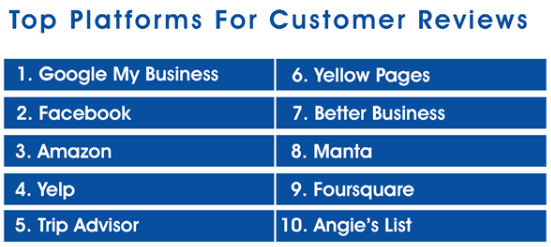
14. Prioritizing the Quality of your Followers
The goal is engagement. And while some might think that having a large number of followers can help with this, that isn’t totally the case. A large following doesn’t always mean high engagement. So, if you’re still desperately trying to get your follower count to rise by following and unfollowing, or * gasp * buying followers, then it’s time to stop.
You may be marketing with Facebook and boast a million followers and still not get a single conversion. You want qualified followers — even if you don’t have that many.
If your followers are composed of random people who aren’t really interested in your product and aren’t your target market, then you still won’t be getting the results that you want. That’s just a waste of resources. You want followers that are relevant to your brand, so your priority should be generating engaging content to keep your followers wanting more.
If you play your cards right, the number of your followers (who are relevant to your brand) will also rise. Social media isn’t just about “looking cool.” It’s a tool to grow your business. You should be seeing some kind of return, monetary or otherwise.
Set your goals and objectives straight. Focus on what’s important. A high follower count might make you look cool in the eyes of the people checking out your profile, but if those followers don’t belong to your niche, then you still won’t be generating more sales through it.
Rather than using your resources to gain more followers, utilize it to improve your content. Your content is your social media accounts’ lifeblood. They don’t say “content is king” for nothing. If your content is good, and if you’re targeting the right customers for your brand, then you’ll be able to generate more engagement, gain more relevant followers, and boost your company’s sales.
15. Conclusion
Social media is a powerful tool for businesses if used properly. It isn’t easy and it’ll require plenty of research, monitoring, editing, and brainstorming. It will demand time, effort, and above all persistence. But, once you’re able to utilize it to your advantage, it will become a powerful marketing channel for your business and one that you can’t do without.
It’s important to remember that before getting started on social selling, you want to have a strategy in place for your social media expenditures in order to augment and complement your overall marketing strategy and efforts. Social media is a relatively new and yet powerful marketing channel to build brand awareness, keep your brand alive and relevant, gain potential customers, and nurture and engage with them.
The best way to enhance your social media presence and succeed online within the social networking realm is with consistent, engaging, and valuable social media content, as opposed to promotional and technical information about your products. Recognizing the essentials of social media marketing, analyzing your strategy, and adapting consistently is pivotal as social media platforms, algorithms, and consumer behaviors change over time.
Which one of these social media marketing essentials for 2020 was the most eye-opening for you? Let us know in the comments section below.

